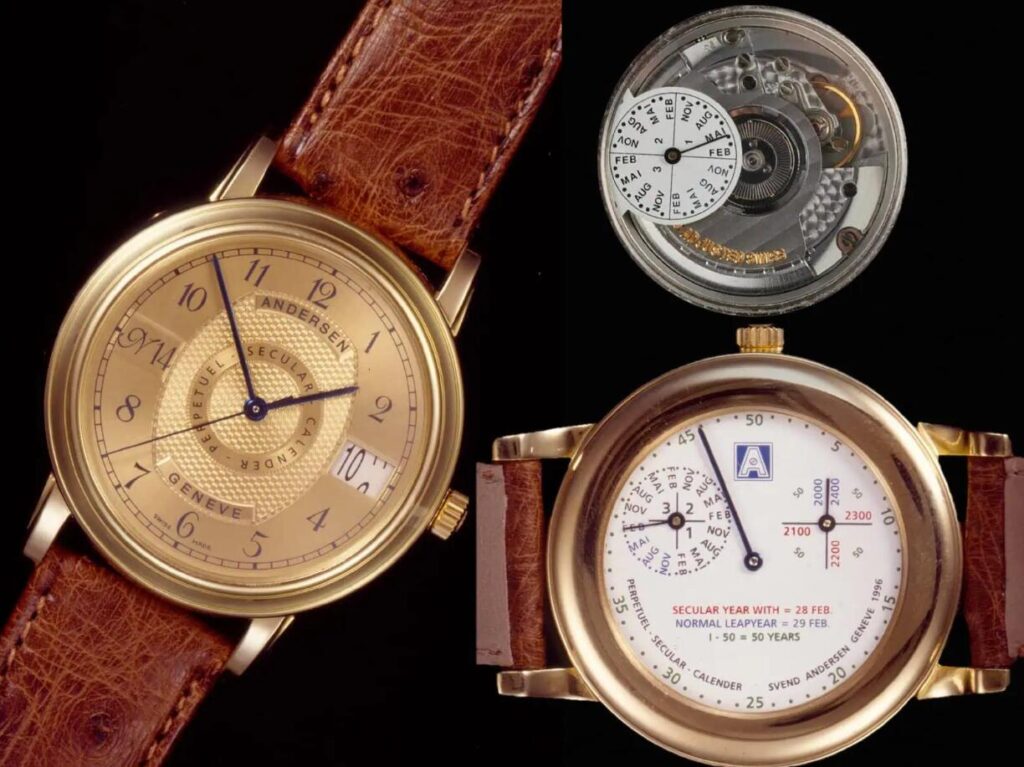Eternal work
For Watches & Wonders 2024, IWC Replica came up with a complicated Portuguese. The new IWC Portuguese Eternal Calendar, Ref. IW505701, knows that 2100, 2200 and 2300 will not be leap years. In keeping with the motto “knowing how”, the Schaffhausen manufacturer has mastered the technical implementation of the Gregorian calendar for a wristwatch in the usual way, with surprisingly few components and in a very engineering manner. The result is impressive and, it seems, also very durable.
However, the predominantly male owners will generally not experience the special features of the IWC Perpetual Calendar newcomer for themselves. After all, it will be another 76 years until 2100, when the mechanics can really show what they are capable of for the first time. But just knowing the specifics is excellent for storytelling. Therefore, the watch cosmos’s attention is first directed at the small pitfalls of our calendar system that are hardly relevant in everyday life.

Calendar knowledge in brief
The question of what happened in Rome from October 5th to 14th, 1582 can be answered in six letters: nothing. Absolutely nothing, because at the behest of Gregory XIII, these days had to be cancelled without replacement. After this compulsory measure, the Gregorian calendar named after him started on October 15th, 1582. With his edict, the reform-minded pope had put an astronomical reform into effect, which ironed out a tiny, but in the long run quite serious, calculation error by Gaius Julius Caesar.
Nevertheless, humanity basically lives according to the Julian calendar. According to it, the solar year lasts 365.25 days. Three normal years of 365 days each are followed by a leap year extended by February 29th. The calendar initiated by the Roman statesman came into force in 45 BC. Advised by the Greek astronomer Sosigenes, he had eliminated all the distortions of the old Roman calendar that had been in use until then.

Perpetual calendars in watches
The Englishman Thomas Mudge made a pocket watch that follows the specifications of the Julian calendar, i.e. has a so-called perpetual calendar, as early as 1764. Patek Philippe launched the first wristwatch of this type in 1925.

The Franck Muller Aeternitas 4, launched in 2006, is significantly more complicated. For this wristwatch, the Swiss master watchmaker Pierre Michel Golay, born in 1935, developed an intelligent mechanism with two additional calendar gear trains. The first of the two contains a wheel for 10, 100 and 1000 years.
This ensemble allows the year to be indicated even beyond a millennium cycle. With the help of appropriately calculated and shaped cams, the second wheel eliminates leap days in all secular years that are not divisible by 400. But he is also aware that 2400, 2800, 3200, etc. will have a February 29th. The year numbers can be read through the small window in the center of the dial, initially up to (2)999. Then the indication jumps to (3)000. The run through the next millennium can begin.

IWC Portugieser Eternal Calendar
IWC has taken a much more pragmatic approach to the new Portugieser Eternal Calendar. Here, the year indication ends in 2399. Contrary to the watchmaking approach of Pierre Michel Golay, the Schaffhausen manufacturer relies on pure engineering. This is based on what Kurt Klaus developed in the early 1980s for the Da Vinci Chronograph with perpetual calendar, which was introduced in 1985.

The technicians have added a module to the automatic caliber 52640 of the Portugieser Eternal Calendar. Every four years at the end of February, it provides the actual calendar mechanism with the information whether there is a 29th day or not. Logically, the associated secular wheel rotates once on its axis every 400 years. The fact that three leap years must be omitted during this period is programmed through three openings. There is also a special Maltese wheel and a few other technical tricks.